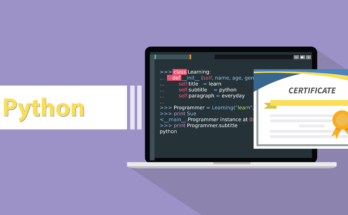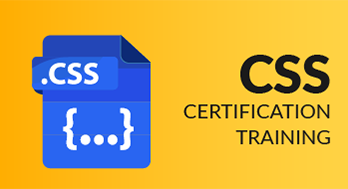The Scrum Foundation Professional Certificate is a sought-after credential in the world of Agile and Scrum project management. This certification not only demonstrates your understanding of Scrum principles and practices but also opens doors to various career opportunities. To help you prepare for the Scrum Foundation Professional Certificate Questions & Answers, this article will provide you with a comprehensive set of questions and answers, along with frequently asked questions (FAQs) to address common queries about this certification. By the end of this article, you will have a strong understanding of what to expect from the certification exam and how to embark on your Scrum journey.
Scrum Foundation Professional Certificate: An Overview
Before diving into the questions and answers, let’s understand what the Scrum Foundation Professional Certificate is all about.
What is the Scrum Foundation Professional Certificate?
The Scrum Foundation Professional Certificate is a globally recognized credential designed for individuals who want to establish their knowledge of Scrum principles and practices. Scrum is a popular Agile framework used in project management to improve productivity, collaboration, and the quality of deliverables. This certification is an excellent way to validate your understanding of Scrum and differentiate yourself in the job market.
Who is it for?
The Scrum Foundation Professional Certificate is for professionals in various roles, including project managers, product owners, team members, and anyone involved in Agile project management. Whether you are an experienced Scrum practitioner or just starting your Scrum journey, this certification is a valuable asset.
What are the Benefits of the Scrum Foundation Professional Certificate?
- Enhanced Career Opportunities: Scrum is widely adopted across industries, and organizations are always looking for certified professionals to lead or contribute to Agile projects.
- Improved Skillset: The certification equips you with a deep understanding of Scrum principles, making you more effective in your role.
- Increased Earning Potential: Certified Scrum professionals often command higher salaries compared to non-certified peers.
- Networking Opportunities: Becoming certified can connect you with a network of Scrum practitioners and organizations that value the certification.
- Professional Growth: The knowledge gained from pursuing the certification is an investment in your professional growth and development.
Now that you have a clear understanding of the Scrum Foundation Professional Certificate, let’s move on to the Q&A section.
Scrum Foundation Professional Certificate: Questions & Answers
Question 1: What is Scrum, and how does it differ from traditional project management?
Answer: Scrum is an Agile framework that focuses on iterative and incremental project management. Unlike traditional project management methodologies, such as Waterfall, which follow a linear, step-by-step approach, Scrum is adaptive and promotes flexibility. Scrum divides a project into smaller iterations, or sprints, and encourages collaboration, transparency, and continuous improvement. It empowers teams to adapt to changing requirements and deliver value incrementally, making it well-suited for dynamic and complex projects.
Question 2: What are the core roles in Scrum, and what are their responsibilities?
Answer: Scrum defines three core roles:
- Product Owner: The Product Owner is responsible for defining and prioritizing the product backlog, ensuring that the team works on the most valuable items first. They act as a bridge between the development team and stakeholders, providing clear requirements and feedback.
- Scrum Master: The Scrum Master is a servant-leader who helps the Scrum team understand and apply Scrum principles. They facilitate Scrum events, remove impediments, and foster a collaborative and self-organizing team environment.
- Development Team: The Development Team is responsible for delivering the product. They self-organize and collaborate to turn backlog items into potentially shippable increments of work. The team is cross-functional, meaning it has all the skills necessary to complete the work.
Question 3: What is a Product Backlog, and how is it managed in Scrum?
Answer: The Product Backlog is a prioritized list of all the work needed for the product. It includes features, bug fixes, technical debt, and any other work necessary to create a valuable product. The Product Owner manages the Product Backlog, continuously refining and prioritizing it based on feedback and changing requirements. The Development Team selects items from the Product Backlog during sprint planning and commits to delivering them during the sprint.
Question 4: What is a Sprint in Scrum, and what happens during a Sprint?
Answer: A Sprint is a time-boxed iteration in Scrum, typically lasting 2-4 weeks. During a Sprint, the Development Team works on the selected items from the Product Backlog to create a potentially shippable product increment. Sprints are characterized by daily stand-up meetings (Daily Scrum), regular inspection, adaptation, and collaboration. At the end of each Sprint, a potentially releasable product increment is demonstrated to stakeholders, and feedback is gathered for the next Sprint.
Question 5: What are Scrum Artifacts, and how do they support Scrum processes?
Answer: Scrum defines three primary artifacts:
- Product Backlog: As mentioned earlier, the Product Backlog is a prioritized list of work items. It serves as a single source of truth for what needs to be done.
- Sprint Backlog: The Sprint Backlog is a subset of the Product Backlog selected for a specific Sprint. It represents the work the Development Team commits to completing during that Sprint.
- Increment: The Increment is the sum of all the work completed during a Sprint. It is a potentially shippable product component and provides visibility into the progress made during the Sprint.
Question 6: What are Scrum Events, and why are they important?
Answer: Scrum defines several events, including Sprint Planning, Daily Scrum, Sprint Review, and Sprint Retrospective. These events ensure transparency, inspection, and adaptation throughout the project. Sprint Planning kicks off a Sprint by defining what will be worked on, Daily Scrum provides daily synchronization, Sprint Review demonstrates the work done, and Sprint Retrospective focuses on continuous improvement.
Question 7: What is the Definition of Done (DoD), and why is it important?
Answer: The Definition of Done is a set of criteria that must be met for a backlog item to be considered complete. It ensures a common understanding of what “done” means for the team and provides transparency to stakeholders. A well-defined DoD is essential for delivering high-quality work and avoiding misunderstandings.
Question 8: How does Scrum handle changing requirements and unexpected issues?
Answer: Scrum is highly adaptable and embraces change. Changing requirements can be accommodated by adjusting the Product Backlog and Sprint Backlog. If unexpected issues arise during a Sprint, the Development Team, with the guidance of the Product Owner, may decide to terminate the Sprint and re-plan. This flexibility is a fundamental aspect of Scrum.
Question 9: What is the role of the Scrum Master in a Scrum team?
Answer: The Scrum Master is a servant-leader who supports the Scrum team in various ways:
- They ensure the Scrum framework is understood and followed.
- They help the team remove impediments and obstacles.
- They facilitate Scrum events and promote collaboration.
- They coach the team in self-organization and cross-functionality.
- They encourage continuous improvement.
Also Read: Professional Consultants Certificate
Conclusion
In the ever-evolving landscape of project management and agile methodologies, Scrum has emerged as a leading framework, offering organizations a versatile approach to manage complex projects. The Scrum Foundation Professional Certificate, a testament to one’s understanding of Scrum principles and practices, plays a pivotal role in this context. This certificate provides professionals with an opportunity to validate their Scrum knowledge and skills through a rigorous examination.
The Scrum Foundation Professional Certificate serves as a testament to one’s grasp of the Scrum framework, its principles, and practices. In today’s competitive job market, where organizations are increasingly adopting agile methodologies, holding this certificate can be a game-changer. Employers, especially in IT and software development, value professionals who are well-versed in Scrum, as it enhances their project management capabilities and enables them to deliver high-quality products efficiently.
Furthermore, the Scrum Foundation Professional Certificate is globally recognized, adding an international dimension to one’s professional profile. The universality of Scrum makes it applicable in diverse industries, from software development to marketing and manufacturing. Consequently, this certificate opens doors to a wide array of career opportunities, making it highly sought after by professionals across the world.




